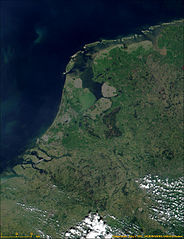While the Western world is still facing a recession, so does also Old Master art in a mixed up way. "Not that buyers are pulling out; it is the art owners who are reluctant to part with their pictures.", reports The New York Times.
Oddly enough, record prices are set as well as lowest prices:
"The first of five world auction records was set with a marine by Willem van de Velde the Younger. “Dutch Men-o’ War and Other Shipping in a Calm” was last seen at auction at Phillips London, on June 1, 1822, when it was bought by Abraham Wildey Robarts. ........... Like virtually all his paintings, the Van de Velde Jr. is in mint condition, with its glazes intact. This is a major consideration in the making of a price, particularly in the case of the Dutch artist’s marines. His mastery in rendering luminous skies and their reflections in the sea is only revealed in its full glory when all the nuances are spared the alteration of pigments. The Van de Velde sold for £5.91 million, double its high estimate."
"A world auction record also was set for Jan Steen when an interior scene featuring card players in frivolous company brought £4.86 million — the price did not even match the low estimate. Such blatant overestimation was not due to some inexplicable hubris on the experts’ part........... It is a dangerous game at which Christie’s and Sotheby’s take turns. If the drying up of supplies continues, auction houses will anyway have to hold only one major sale a year, not two. And that might altogether signal the end of the auction market in this field, because for auctions to attract bidders, a certain pace is indispensable. Otherwise, interest just withers away." Read more.
The Netherlands, a country half the size of the state of Maine with over 16 million people, is home to a pig population of 14 million. To put this in perspective, the U.S. has approximately a population of 65 million pigs in a country with 300 million people. The New York Times reports about the space and environmental challenges the Netherlands is facing, being Europe's leading pork producer.
"Like pork producers everywhere, Dutch farmers are fighting rising costs by resorting to ever bigger herds and barns, a trend that is reinforced by the petite size of the Netherlands. In recent years, an architectural firm in Rotterdam even proposed skyscrapers for pigs, high-rise barns capable of taking in thousands of animals in very small space. They would even come with balconies so that the hogs could occasionally enjoy fresh air, unlike the pigs in most Dutch barns, which spend their lives indoors."
Wyno Zwanenburg, President of the Dutch Pig Farmers Union says " Farmers have no choice but to expand, noting that since 1990, the number of Dutch pig farmers has steadily declined from about 28,000 and is expected to reach about 2,000 in the next few years.
“We’re facing a global challenge,” he said. “And in this emotional discussion, there is some criticism that bigger is always worse than smaller.” To which I say, if people say there is no other choice than getting bigger, we're having a major problem.
Read more.

